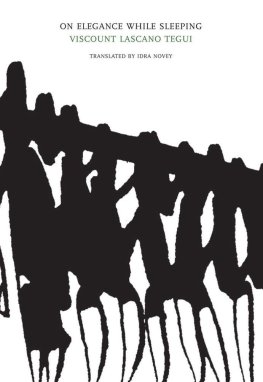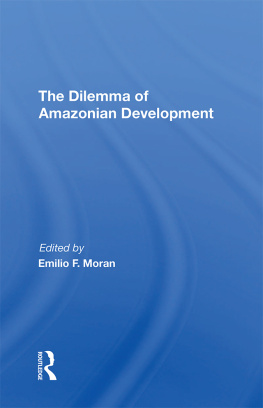Emilio Zamora (editor) - The World War I Diary of José de la Luz Sáenz
Here you can read online Emilio Zamora (editor) - The World War I Diary of José de la Luz Sáenz full text of the book (entire story) in english for free. Download pdf and epub, get meaning, cover and reviews about this ebook. year: 2014, publisher: Texas A&M University Press, genre: Home and family. Description of the work, (preface) as well as reviews are available. Best literature library LitArk.com created for fans of good reading and offers a wide selection of genres:
Romance novel
Science fiction
Adventure
Detective
Science
History
Home and family
Prose
Art
Politics
Computer
Non-fiction
Religion
Business
Children
Humor
Choose a favorite category and find really read worthwhile books. Enjoy immersion in the world of imagination, feel the emotions of the characters or learn something new for yourself, make an fascinating discovery.

- Book:The World War I Diary of José de la Luz Sáenz
- Author:
- Publisher:Texas A&M University Press
- Genre:
- Year:2014
- Rating:3 / 5
- Favourites:Add to favourites
- Your mark:
- 60
- 1
- 2
- 3
- 4
- 5
The World War I Diary of José de la Luz Sáenz: summary, description and annotation
We offer to read an annotation, description, summary or preface (depends on what the author of the book "The World War I Diary of José de la Luz Sáenz" wrote himself). If you haven't found the necessary information about the book — write in the comments, we will try to find it.
The World War I Diary of José de la Luz Sáenz — read online for free the complete book (whole text) full work
Below is the text of the book, divided by pages. System saving the place of the last page read, allows you to conveniently read the book "The World War I Diary of José de la Luz Sáenz" online for free, without having to search again every time where you left off. Put a bookmark, and you can go to the page where you finished reading at any time.
Font size:
Interval:
Bookmark:
The World War I Diary of Jos de la Luz Senz
Number Thirteen:
C. A. Brannen Series

TheWORLD WAR I DIARY of JOS DE LA LUZ SENZ
Edited and with an Introduction by
EMILIO ZAMORA
Translated by
Emilio Zamora with Ben Maya
TEXAS A&M UNIVERSITY PRESS
COLLEGE STATION
Copyright 2014 by Texas A&M University Press
All rights reserved
First edition
Manufactured in the United States of America
The paper used in this book meets the minimum requirements of the American National Standard for Permanence of Paper for Printed Library Materials, Z39.48-1984. Binding materials have been chosen for durability.

: Jos de la Luz Senz, US Army photograph, 1918
The editor gratefully acknowledges Alberto Jimnez, who photographed the oil painting that appears on the cover of the book.
LIBRARY OF CONGRESS CATALOGING-IN-PUBLICATION DATA
Saenz, Jos de la Luz, 18881953, author.
[Mxico-americanos en la Gran Guerra. English]
The World War I diary of Jos de la Luz Saenz / edited and with an introduction by Emilio Zamora ; translated by Emilio Zamora with Ben Maya. First edition.
pages cm. (C. A. Brannen series ; number thirteen)
Translation of: Los mxico-americanos en la Gran Guerra: y su contingente en pr de la democracia, la humanidad y la justicia, first published in original Spanish in San Antonio by Artes Graficas, 1933.
Includes bibliographical references and index.
ISBN 978-1-62349-113-0 (cloth : alk. paper) ISBN 978-1-62349-114-7 (pbk. : alk. paper) ISBN 978-1-62349-151-2 (e-book)
1. United States. Army. Infantry Division, 90thBiography. 2. World War, 19141918Regimental historiesUnited States. 3. Saenz, Jos de la Luz, 18881953. 4. Mexican AmericansTexasBiography. 5. Civil rights workersTexasBiography. 6. World War, 19141918Personal narratives, Mexican American. 7. World War, 19141918Participation, Mexican American. I. Zamora, Emilio, translator, editor. II. Maya, Ben, 2012, translator. III. Title. IV. Series: C. A. Brannen series ; no. 13.
D570.390th .S2413 2014
940.412730922dc23
2013035951
TO MY DEAR AND LONG-SUFFERING WIFE AND MY LOVING CHILDREN, WITH THE SOLE INTENT OF MAINTAINING THE MEMORY OF THE HEROIC SACRIFICE THAT OUR AMERICAN SOLDIERS OF MEXICAN ORIGIN MADE IN THE PAST WORLD WAR, ALL THE WHILE PRESERVING DEMOCRATIC PRINCIPLES AND PROCLAIMING JUSTICE FOR OUR SUFFERING HUMANITY!
J. LUZ SENZ
I AM GRATEFUL TO THE SENZ FAMILY FOR THE TRUST THEY PLACED IN ME. I ALSO THANK MY WIFE ANGELA, AND OUR DAUGHTERS CLARA AND LUZ FOR THEIR LOVE AND SUPPORT AND WELCOME CLARAS HUSBAND FELIX GONZALES AND THEIR BEAUTIFUL BOY FELIX Jr., FELICIANO, TO THE FAMILY.
EMILIO ZAMORA
Contents
Illustrations
Maps
Photographs
Photographs in image gallery
FOR DEMOCRACY, HUMANITY, AND JUSTICE
Introduction
Jos de la Luz Senz,
The young Senz-Hernndez family led a difficult life that depended on Rosalos meager earnings as an itinerant railroad worker and migratory farm laborer. Cristinas passing, on June 28, 1896, brought even greater hardship, as Rosalo now had to depend on the help of relatives and his oldest daughter, Marcelina, to care for their home and raise the children. Senz, who was eight years old when his mother died, recalled spending time with other relatively unsupervised boys, seeking youthful adventures in the ubiquitous chaparral brush. Rosalos concern with the welfare of his children may have contributed to his decision in 1900 to marry a woman named Petra Ramos. According to Senz, Petra raised them with the same deep love that they had been accustomed to receiving from Cristina. Soon after their marriage, Rosalo and Petra made another important decision: they moved the family to the nearby town of Alice so the children could attend school. This move had a profoundly positive effect on Senzs social and intellectual development.
The schools he attended prepared Senz in nonacademic ways as well. He remembered fights with Anglo youth and confrontations with teachers in the public schoolexperiences that encouraged him to develop self-pride and a righteous sense of responsibility to defend his community. Some teachers in the public school stood out as caring and effective instructors, however. They helped Senz develop the confidence to stand up to discrimination and other subtler forms of racist behavior. He reserved his highest praise for his Mexican teachers, especially Velzquez, who modeled civic participation and opened his apparently vast personal library (which included among its many subjects books on Mexican history and culture) to Senz and other students.
If the public school provided Senz with a mostly instrumentalist and practical form of education and the Mexican schools a more culturally affirming type of learning through a curriculum that emphasized an exalted form of Mexicos history and culture, the lessons he received from the Mexican community and at home gave special meaning to both. His difficult experiences as a young migrant worker, traveling with his father to the cotton fields of South and Central Texas, and exposure to stories of violence toward Mexicans in the region where he grew up had already implanted in Senz an awareness of the racially charged environment that victimized Mexicans and found daily expression in his public school. Also, Senz acknowledged a home-based Mexican education that included the use of Spanish as well as a family history of epic proportions. His mother, Cristina Hernndez, was descended Although the Mexican schools Senz attended may not have explicitly incorporated such home-based knowledge of high drama and decline, they reinforced it. Velzquez, for instance, shared with students his deep admiration for Benito Jurez, the Zapotec Indian who served as president of Mexico between 1858 and 1864. He also no doubt underscored Jurezs important role in unifying the nation during the French intervention in Mexico in the early 1860s. Jurez led the resistance as an inspiring head of state on the run and resumed the presidency after the defeat of the French. Velzquez also encouraged a small group of graduating students, including Senz, to organize a public commemoration of Jurez. Senz later recalled that organizing the event and serving as its principal orator gave prideful expression to his deeply held Mexican and indigenous identity.
When a group of parents from El Palo del Oso, a nearby community of railroad workers, read about the Jurez program and Senzs leading role in it, they immediately offered him a teaching job in a private Mexican school they named La Escuela Laica Vicente Lozano. Still young but clearly mature for his age, Senz accepted the offer to teach children during the day and adults in the evening.
By the 1910s, Senz had found his way to the area south and southeast of San Antonio. There he worked mostly in public, but separate, Mexican elementary schools and established himself as a respected educator and frequent critic of segregation and discrimination against Mexican youth in the schools. While living in Moore, he joined the Mexican Protective Association, a federation of mutual aid societies in Central Texas, and involved himself in organizing Mexican patriotic celebrations and school-related activities. He married Mara Petra Esparza from San Agustn, a small Mexican-origin community founded and settled by the Esparza family. San Agustn is located near Pleasanton, about fifty miles south of San Antonio, where Senz taught in a separate Mexican elementary school. Mara Petra, who was born in August 1898, was a descendant of Jos Mara (Gregorio) Esparza, who Senz was teaching Mexican children in San Agustn in 1917, when the US government began calling on all able-bodied men between nineteen and forty years old to register for the military draft. Although he could have secured an exemption from military service due to his position as the head of a household with children, Senz registered and joined the army in February 1918. His diary provides a detailed account of the next sixteen months of his life, from enlistment through discharge.
Next pageFont size:
Interval:
Bookmark:
Similar books «The World War I Diary of José de la Luz Sáenz»
Look at similar books to The World War I Diary of José de la Luz Sáenz. We have selected literature similar in name and meaning in the hope of providing readers with more options to find new, interesting, not yet read works.
Discussion, reviews of the book The World War I Diary of José de la Luz Sáenz and just readers' own opinions. Leave your comments, write what you think about the work, its meaning or the main characters. Specify what exactly you liked and what you didn't like, and why you think so.











